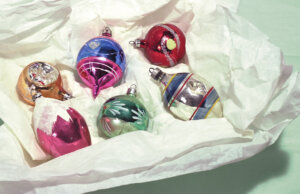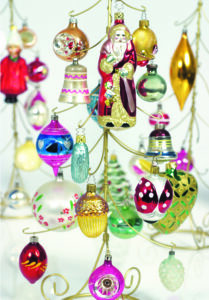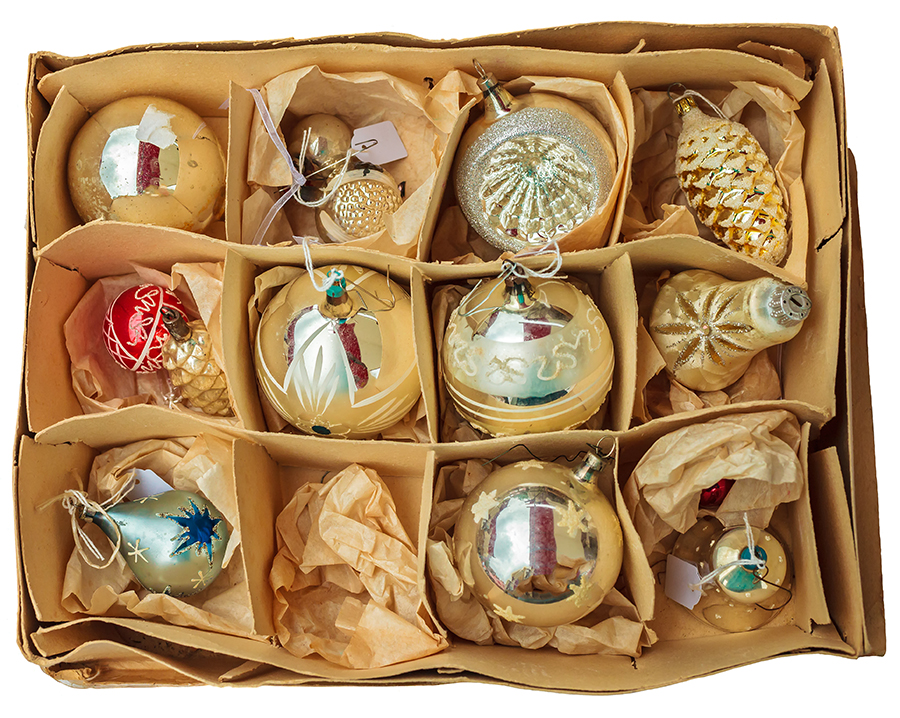Christmas tree ornaments are among the most treasured and collected items of decoration in most American homes.
Passed from hand to hand during the annual transformation of an ordinary evergreen into a sparkling and spectacular pièce de résistance, these ornaments resonate with associations even richer than the fragrance of the tree itself.
Perhaps this enjoyable phenomenon occurs because Christmas ornaments are brought out only once a year and thus eternally retain their allure; infrequently emerging from their tissue chrysalises to alight briefly like brilliant butterflies on green boughs, they do not tarry long enough to foster the boredom of familiarity.
Or perhaps it is because they are unique heirlooms handed down from generation to generation, glimmering emblems that link the past, the present, and the future. Since they evoke vivid memories and handed-down stories of family and friends exchanged while decorating this year’s tree—memories and anecdotes that will be passed on to generations yet unborn—they are more valuable than any heirloom sideboard for enriching the cultural fabric of the family.

Regardless of the reason, Christmas ornaments have been a source of familial delight since their advent. Legends abound about the origins of both the Christmas tree and its decorations. It is known that by 1893, German families had enthusiastically embraced the new custom of decorating Christmas trees with apples, candles, nuts, cookies, tinsel, paper or cloth roses, and a star.
When the German Prince Albert married Queen Victoria and became her consort, he bore with him to England the beloved Christmas ritual of his homeland, and the Christmas tree—by then additionally decorated with candies, fancy cakes enticingly suspended by ribbons, intricate paper chains, small toys and baubles, all sorts of fruits, and lovely glass ornaments hand-blown by German craftsmen—became the rage in nineteenth-century England and, shortly thereafter, in this country.
The genesis of the fragile glass ornaments is an interesting story in itself. One story holds that upper-class German families began decking their Christmas trees with status-symbol gilded fruit and nuts and that these decorations were soon superseded by even more expensive and exclusive silvered glass ornaments.
F.W. Woolworth introduced the American public to these exquisite German decorations in 1890.
More than likely, few families own any of these very old glass, tin, paper, or wood ornaments, but, just as likely, they do possess at least a few treasured heirloom decorations passed down from grandparents or parents. Many older pieces may still be acquired at estate sales and auctions, flea markets, antique shops, and on the Internet; reminiscences about who found them and where become the first of many memories that will eventually become part and parcel of their charm.
And at least one company today is making quality reproductions of the venerated German blown-glass originals in addition to fetching designs both new and nostalgic, just waiting to become family memory-makers.

No doubt there are a few people who collect vintage ornaments for their monetary value or for the sake of collecting, but for most, the inestimable value of Christmas ornaments, heirloom or not, lies in the intangible but significant recollections they represent.—By Kat Schneider; photography by Pat Wherritt
Note: Many places can be found selling reproductions of the original German ornaments that are still made by Inge-Glas of Germany—the oldest Christmas ornament company in the world. They started in the mid-1850s in Lauscha, Germany. Inge’s Christmas Heirloom glass ornaments are the result of 14 generations of glass blowing expertise and a cache of over 6000 antique and new molds too. These German mouth-blown and hand-painted ornaments represent the skill, heart, and effort of over 250 craftsmen employed by Inge-Glas.
